…And it’s at risk, say activists, with news breaking of the Khar municipal market being slated for redevelopment. It’s among hundreds of Art Deco buildings that are slowly disappearing from the suburbs due to a lack of citizen awareness and empathetic authorities

Earlier this week Ranjit Hoskote noticed a board hanging at the entrance of the municipal market in Khar West which indicated that the market, which is an Art Deco structure is set to be redeveloped by the Manthan Group. Pics/Dweep Bane
Earlier this week, while walking through the bylanes of his neighbourhood, poet-author Ranjit Hoskote noticed a board hanging at the entrance of the municipal market in Khar West. “The board indicated that the market, which is an Art Deco structure, although worn down by neglect, shoddy repairs, seepage, and tarpaulins, is set to be redeveloped by a builder who seems unfazed by its enchanting blend of glass, chrome, and grey massifs [a large structural element, often used for support or to create a sense of grandeur],” says Hoskote.
“Stylistically, the municipal market is very classic,” notes Atul Kumar, founder of Art Deco Mumbai, a group dedicated to preserving and documenting the city’s Art Deco architectural heritage. “It has a distinctly stepped profile and is an elegant, simple structure,” notes Kumar, adding that the fact that the market is a public building gives it even more significance in terms of urban memory.
Unfortunately, hardly anyone even knows the structure is Art Deco. When we say Art Deco, most people tend to immediately think SoBo. However, Art Deco isn’t confined to Fort and Marine Drive, it’s spread across the city, from Matunga and Dadar, to even northern suburbs like Bandra and Khar. Despite being over 70 years old, many of these buildings remain structurally sound — a mark of solid craftsmanship.
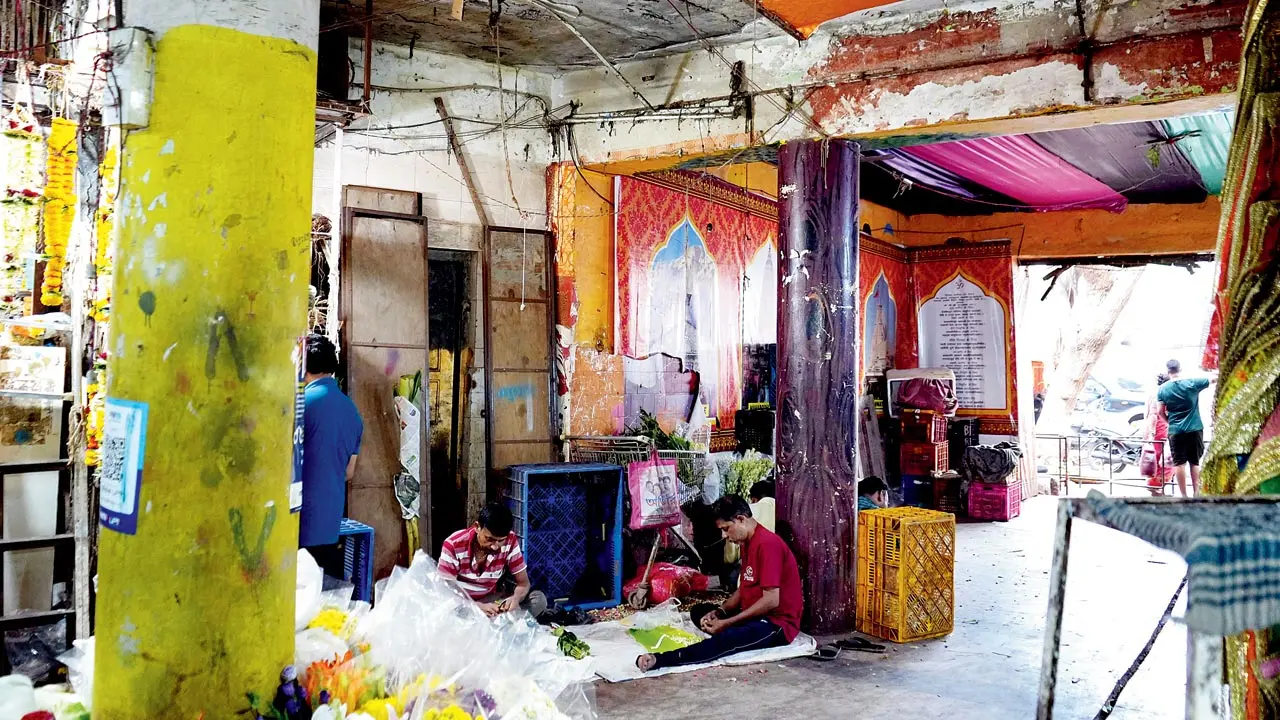 As Sunday mid-day headed to the market, we found walls and ceilings crumbling, with peepal trees sprouting from entryways, and watched our feet constantly to prevent tripping over the uneven flooring or landing in the many puddles inside the structure
As Sunday mid-day headed to the market, we found walls and ceilings crumbling, with peepal trees sprouting from entryways, and watched our feet constantly to prevent tripping over the uneven flooring or landing in the many puddles inside the structure
The one major difference between them and the SoBo Art Deco structures we have all come to know and love, is citizens’ awareness. And what we don’t know, we can’t protect.
Did you know that there are at least 1475 Art Deco buildings across the city that have been documented by Art Deco Mumbai; 76 of them are protected with the “heritage” tag under UNESCO, and all of them are in South Mumbai. The buildings in central and northern Mumbai may not be recognised as “heritage”, but they are intrinsically tied to the city’s history.
“We’ve documented them lane by lane, building by building, with maps, photographs, and detailed notes on architectural features,” says Kumar, “Unfortunately, when these buildings aren’t maintained or repaired, they’re often seen as easy targets for redevelopment, which is deeply disheartening.”
 Vikas Dilawari, Atul Kumar and Pomley Maheshwari
Vikas Dilawari, Atul Kumar and Pomley Maheshwari
Mustansir Dalvi, architect, professor, and trustee of Art Deco Mumbai, concurs: “Outside the UNESCO-nominated Victorian Gothic and Art Deco Ensembles zone in South Mumbai, most Art Deco buildings in the city aren’t protected.”
Located on 5th Road, opposite Khar railway station’s exit, the market houses around 330 shops offering a wide range of goods and services.
As Sunday mid-day heads there on Thursday, we find walls and ceilings crumbling, with peepal trees sprouting from entryways, and watch our feet constantly to prevent tripping over the uneven flooring or landing in the many puddles inside the structure.
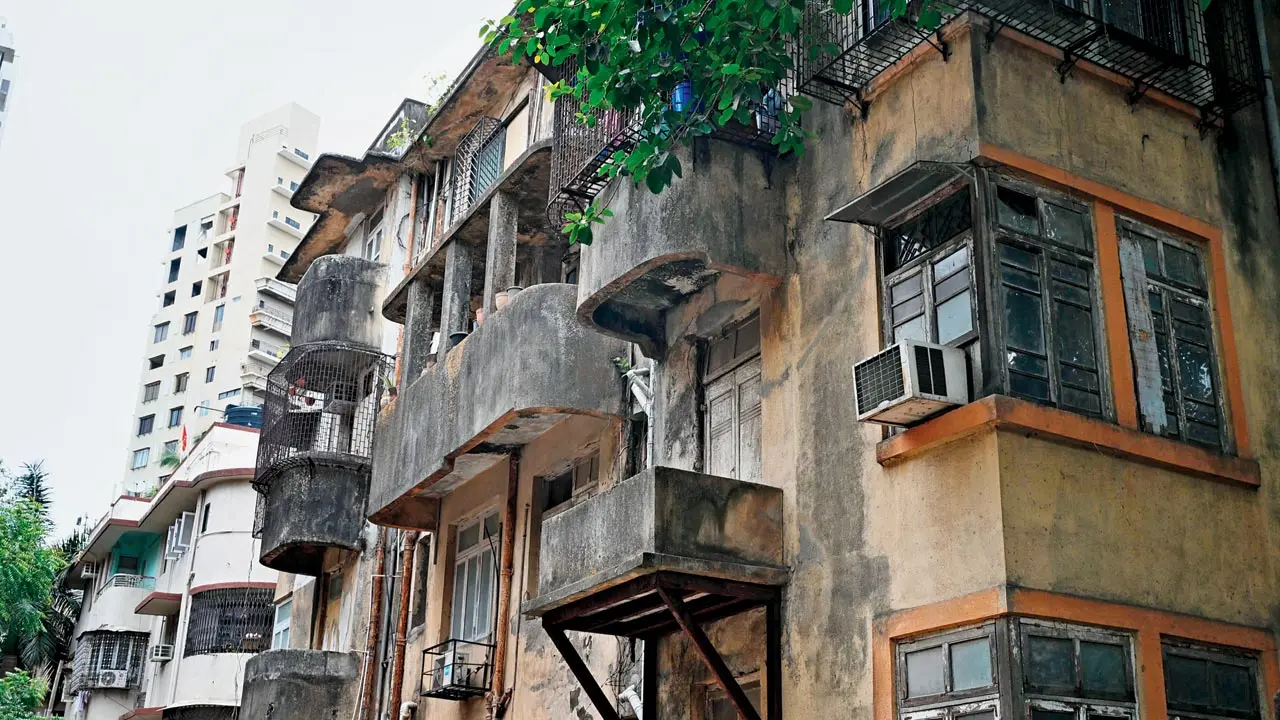 Atul Kumar says that when buildings are redeveloped to maximise FSI, they lose original Art Deco features like balconies, cross-ventilation, and high ceilings like the ones seen in classic buildings like Shenha Sadan. Pics/Kirti Surve Parade
Atul Kumar says that when buildings are redeveloped to maximise FSI, they lose original Art Deco features like balconies, cross-ventilation, and high ceilings like the ones seen in classic buildings like Shenha Sadan. Pics/Kirti Surve Parade
Shekhar Waghmare, 68, who runs a provision store there, tells us the structure was built in 1957, a year before his grandfather set up shop in the compact 6x6-sq-ft stall that has since become a go-to spot for locals seeking daily rations. “I’ve been sitting at this shop for nearly 50 years now,” he notes. “And this isn’t the first time this developer has taken up the project.”
The reconstruction board outside Khar Market names Manthan Group, a Mumbai-based construction firm, as the project developer. However, there was no response to this paper’s repeated attempts to contact them for details.
According to tailor Yamin Sheikh, whose shop is at the market entrance facing 5th Road, word on the street is that the structure will be completely torn down and replaced by a high-rise, with vendors relocated to the first few floors. However, these remain mere speculations, as the builder has yet to initiate any dialogue with the vendors, he adds.
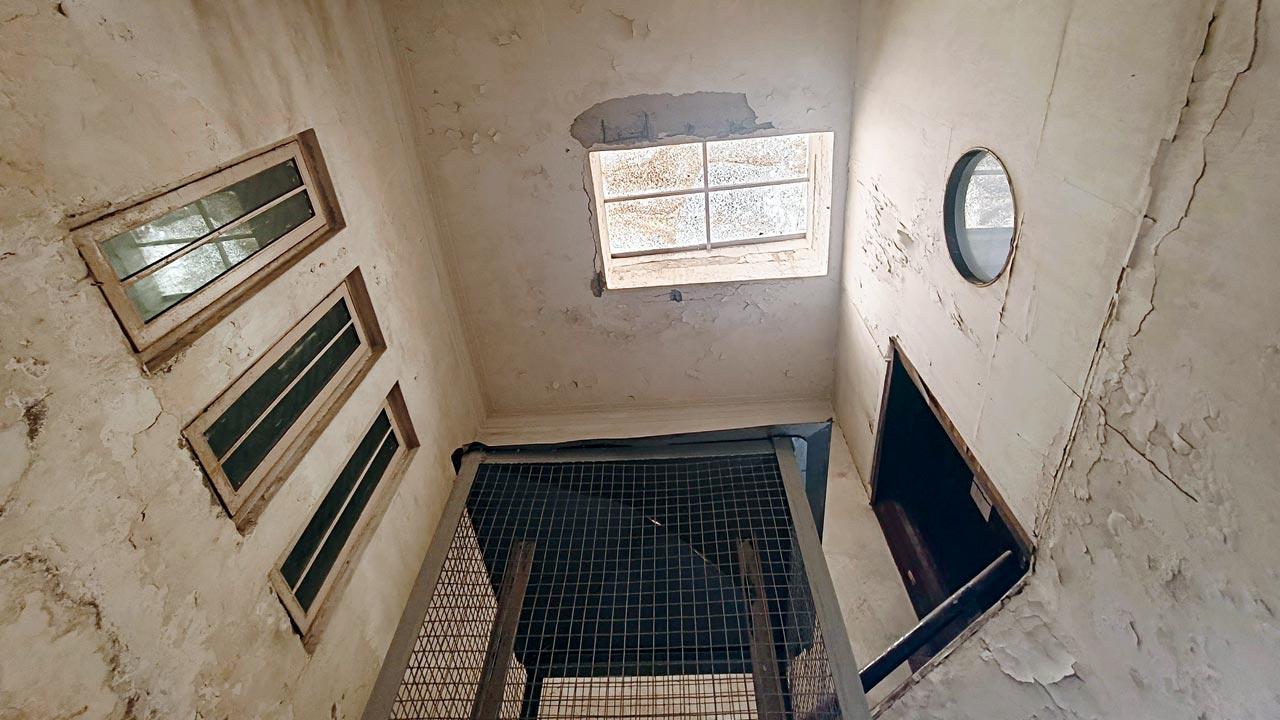 Built in 1936, Sneha Sandan is a magnificent example of an Art Deco building with portholes and a skylight.
Built in 1936, Sneha Sandan is a magnificent example of an Art Deco building with portholes and a skylight.
Dalvi makes a crucial point: “If the plan is to build several floors of market or shopping space, then it’s flawed from the start. Markets are successful only on the ground floor. People do not climb stairs to reach market spaces on upper floors.”
The Manthan Group was also behind the redevelopment of the Pali market in Bandra in 2021. In 2022, less than a year after the project’s completion, vendors began voicing concerns about dwindling sales because customers had to climb up a flight of stairs to reach the marketplace.
If something similar were to happen at Khar market, it would be a serious civic loss, says Dalvi.
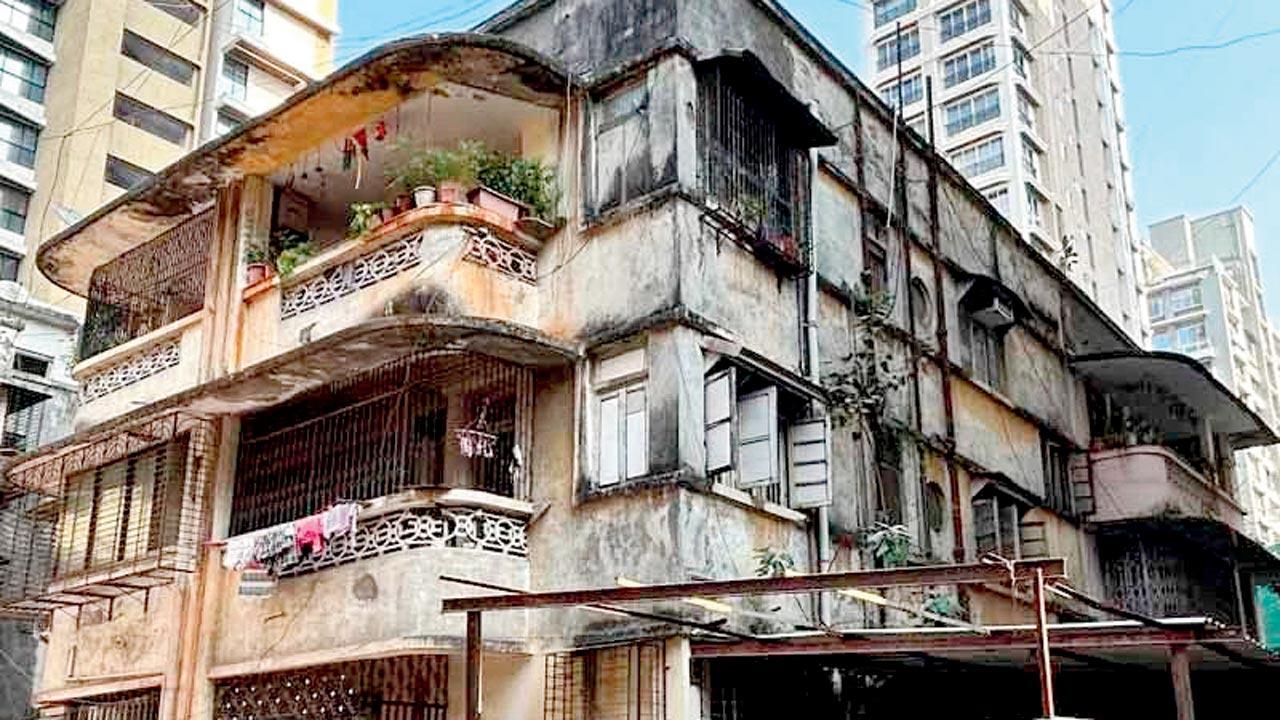 According to Local tailor Kalpesh Darji the three-storey Narmada Niwas in Matunga, with curvilinear balconies, a porthole, and streamlining was razed for redevelopment a little over a year ago. Pic Courtesy/Art Deco Mumbai
According to Local tailor Kalpesh Darji the three-storey Narmada Niwas in Matunga, with curvilinear balconies, a porthole, and streamlining was razed for redevelopment a little over a year ago. Pic Courtesy/Art Deco Mumbai
For now, licensed traders at Khar market remain in the dark about what the future holds. Many, including Waghmare, are sceptical that reconstruction will begin any time soon, given the builder’s past track record.
Unaware that the market is an Art Deco structure, many traders recall that discussions about redeveloping it began as early as 2009. “From what I remember, the builders met with many of us licensed vendors and offered an incentive of about R18,000 to R20,000, along with a promise of double the space we currently occupy,” says Waghmare.
However, the deal had several loopholes that vendors quickly caught on to. “We fought for our space back then, and we will do it again if we have to,” says Kavita, one of 80 licensed fisher-women who have been running businesses in the market for over three generations.
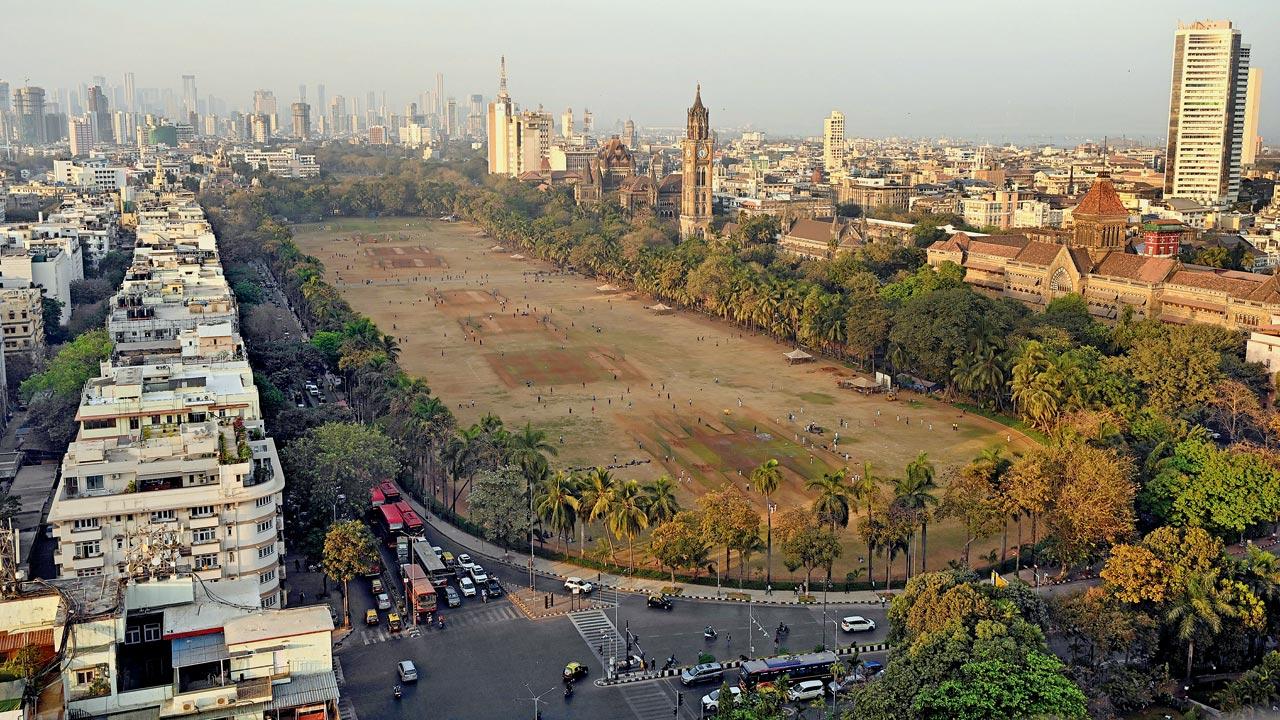 Aerial view of the Oval Maidan Area. File pic/Kirti Surve Parade
Aerial view of the Oval Maidan Area. File pic/Kirti Surve Parade
Asked if she was aware of the architectural provenance of the market, she said she wasn’t. And it’s not a factor for them when they’re struggling just to ensure their livelihood doesn’t take a hit, she says.
Traders remain divided on the redevelopment. According to Rajaram Patil, a vegetable vendor, parts of the market are in need of reconstruction, stating that his store is among quite a few dealing with seepage issues. However, Waghmare and Kavita point out that the sections where they’ve set up shop show no signs of structural weakness. “We haven’t faced any issues all these years,” says Waghmare.
According to Dalvi, most Art Deco buildings in the city are still structurally sound. “They were built between the late 1930s and 1950s using RCC (reinforced cement concrete),” he explains, “Construction during that era used high-quality materials and craftsmanship, which is why many of these buildings have stood strong for over 70 years with minimal need for major repairs to the structure itself.”
“Good maintenance is the need of the hour,” says Vikas Dilawari, a practising conservation architect. He believes that instead of demolishing a well-built, functioning structure simply because it’s old or lacks a heritage tag, authorities should work in consultation with citizens and residents to repair and restore it. “If a building is structurally sound and still in use, it deserves to remain,” he says.
Pomley Maheshwari, a resident of Sneha Sadan — an Art Deco building in Matunga built in 1936 — recalls discovering the strength of the structure a few years ago while considering a flat expansion. The apartment, first tenanted by her grandfather-in-law in 1937, had walls made of bricks nearly 12 inches thick. “It made the structure incredibly sturdy,” she says. In comparison, the standard thickness of a brick today is 3.54 inches. Unable to manage its upkeep, however, the landlady and residents at Sneha Sadan are now considering redevelopment.
Less than a minute away, there’s another Art Deco building we had meant to visit: the three-storey Narmada Niwas, with curvilinear balconies, a porthole, and streamlining. But on reaching the site, we find nothing but debris. Local tailor Kalpesh Darji, unaware of the building’s pedigree, mentions that the structure was razed for redevelopment a little over a year ago.
Redevelopment is driven entirely by the aspirations of individual property owners and developers, rues Dalvi. “Anyone can push for it, and it’s often seen as a personal right,” he adds.
Building owners often struggle with maintenance, making it difficult for landlords to sustain these aging properties. For Nimisha Khimji, the landlady of Sneha Sadan, Sneha Sadan is home. “My grandfather built Sneha Sadan in 1936. I wouldn’t want to see it go into redevelopment, but maintenance has become a major challenge,” she explains. “Under the old tenancy system that’s been in place since my grandfather’s time, tenants pay as little as '160 to '700 per month. The rent hasn’t kept up with the times, making it nearly impossible to invest in the upkeep of an Art Deco property like this.”
With redevelopment, Khimji would receive not only the existing built-up area she owns now, but an additional portion of the saleable floor space index (FSI) as well. The tenants, too, would become entitled to ownership of their new flats. This is why “most tenants want the building to go in for redevelopment”,
Khimji claims.
According to Dilawari, the earlier byelaws stated that even if a structure was rebuilt, the FSI could not be exceeded and would have to be maintained. “However, the current laws, particularly as per the Development Control and Promotion Regulations (DCPR 2034) which was sanctioned in 2018, provides incentives: more FSI for redevelopment. That’s why Mumbai has become this massive archaeological site [all dug up],” he says.
Conservation activist Kumar adds that when buildings are redeveloped to maximise FSI, they lose original Art Deco design features like balconies, cross-ventilation, and high ceilings. These are replaced by boxy, dense structures. “Only lobbies may retain a sense of design, but that’s not where people live,” he says.
“Art Deco is deeply embedded in both the emotional and cultural fabric of the city,” adds Kumar, “It was a defining feature of Mumbai’s first planned neighbourhoods that introduced apartment-style homes, parks, places of worship, schools, and cinema halls, all contributing to a certain quality of life for residents.” He adds that many of these buildings are still occupied by third-and fourth-generation families, giving them a sense of continuity and a deeply rooted ethos.
Author Hoskote admits that change is inevitable, but wonders whether it’s too utopian to hope that the façade might be preserved as a reminder of a vanished age of grace and elegance that Art Deco once embodied.
On posing this question to the BMC, an official tells us: “Art Deco or not, the builders contracted for the project usually have complete autonomy over the decision of either maintaining some parts of the structure or redeveloping it completely.”
Hope is not entirely lost, though. “Most people are only now beginning to understand what Art Deco truly is, which is why I believe there’s still time for this conversation to enter the mainstream,” says Dilawari.
The problem is greed, says Dilawari, while acknowledging that change is inevitable when driven by genuine need, like enclosing a balcony for a growing family. “The real issue starts when a modest four-storey building is replaced by a 15-20-storey complex packed with podium parking of same height as the original structures ,” he say, “As the saying goes, there’s enough for everyone’s needs, but not for everyone’s greed.”
Dalvi chimes in: “The street-level experience is drastically altered — the scale changes, light disappears, and a once vibrant street becomes dark and uninviting.”
In the case of distinct Art Deco structures like the Khar municipal market , Dilawari warns that demolition often leads to poorly designed replacements — structures that are more cramped, less ventilated, and far removed from the original climate-conscious designs. He says, “If today’s architecture cannot be tomorrow’s heritage, we have no right to tear down yesterday’s.”
1475
Art Deco buildings documented by Art Deco Mumbai
1399
Art Deco buildings with no protection
76
Protected under UNESCO; all are in SoBo
What people power can do
In 2018, after a decade-long effort, UNESCO inscribed the Victorian Gothic and Art Deco Ensembles of Mumbai as a World Heritage Site. This designation protects, enhances, and showcases a remarkable collection of 94 historic buildings in South Mumbai’s heritage precinct, including the iconic Art Deco promenade along Marine Drive. The nomination was prepared entirely by a collective of concerned citizens, resident associations, architects, conservationists, and urban planners. “This is a powerful example of how effective citizen-led movements can be in safeguarding a city’s heritage,” notes Atul Kumar, founder of Art Deco Mumbai.
 Subscribe today by clicking the link and stay updated with the latest news!" Click here!
Subscribe today by clicking the link and stay updated with the latest news!" Click here!








